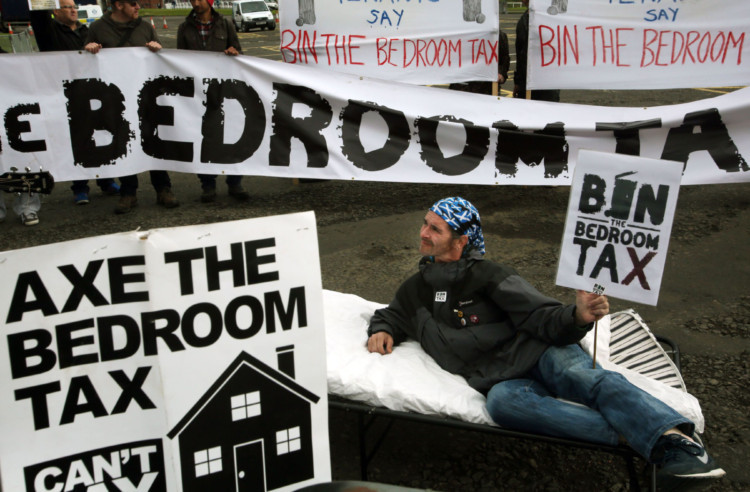
Housing shortage means no escape from hardship.
People hit by the “bedroom tax” are facing almost a decade of financial misery, according to a shock new report.
A shortage of one-bedroom houses in Scotland means people who want to downsize to escape the hated levy could wait anywhere between three and nine years for a smaller property to become available. This would leave them with crippling reductions of £600 a year in their benefits in the meantime.
The report also revealed that tens of thousands of people racked up debt in unpaid rent before the Discretionary Housing Payments saved them.
The dire situation means the multi-million pound fund will have to be continued for years to protect vulnerable and disabled people being hit by the levy. The shock findings come just days after Scotland’s deputy first minister Nicola Sturgeon announced that the SNP will make £20 million available to councils next year to protect Scots hammered by the cuts.
The new study also revealed that most of the 82,000 Scots hit by the bedroom tax are refusing to move into smaller homes as they think they are unsuitable.
Housing and economics professor Kenneth Gibb, who wrote the report, said: “A worryingly large number of tenants subject to the ‘bedroom tax’ built up arrears when it was introduced. A lot of those arrears may have been cleared by DHP but there has to be a continuation of those payments as this is affecting a lot of people’s ability to pay.
“Also, downsizing won’t play the role that the UK Government has suggested it will. Many people are unwilling to move to a smaller property.
“Some people who are disabled or ill don’t want to move because their houses are adapted and suitable for their needs. Also, one parent families don’t want to downsize so visiting children can stay overnight.”
The bedroom tax, which was introduced in April, has seen around 82,000 Scots docked up to 25% of their housing benefit for having a spare room, costing those affected £50 extra a month on average. The new report, which was commissioned by the Scottish Parliament’s welfare reform committee, said an estimated 29,047 people could avoid the levy by moving into a one-bedroom property.
However, the report adds it could take up to nine years to find smaller homes for them and most wouldn’t want to move. And at least 14,905 people racked up rent arrears before DHP were introduced.
Councils in Scotland were given £10m to help people in “difficult situations” when the bedroom tax was introduced in April. However, the Scottish Government last month agreed to make a further £20 million available to councils to cope with demand.
Friday’s announcement by Nicola Sturgeon means that a further £20m will now be available in 2014.
Michael McMahon MSP, convener of the welfare reform committee, defended people who refuse to move into smaller homes.
He said: “It is not a case of ‘spare rooms’ but of ‘space to live’, so homes have the capacity for either the facilities or loved ones that people need to make life worth living. No policy should put such basic rights at risk.”
However, Scottish Conservative MSP Alex Johnstone, who also sits on the committee, said the report was “politically skewed” and relied on “fragmented anecdotal evidence and opinion”.

Enjoy the convenience of having The Sunday Post delivered as a digital ePaper straight to your smartphone, tablet or computer.
Subscribe for only £5.49 a month and enjoy all the benefits of the printed paper as a digital replica.
Subscribe